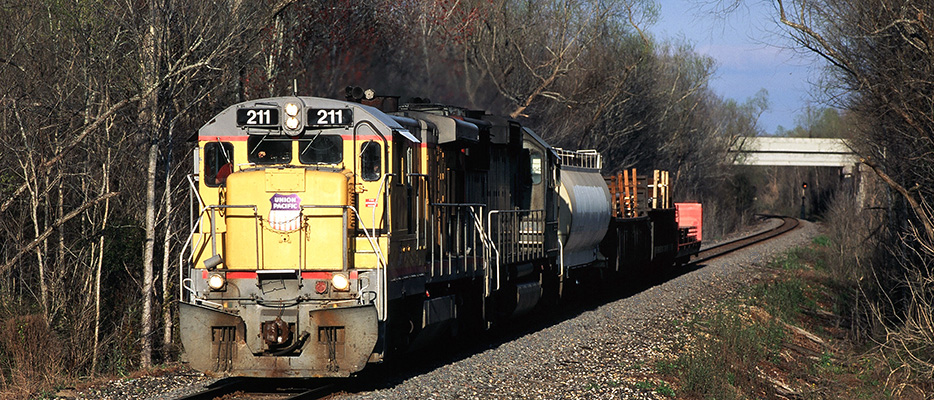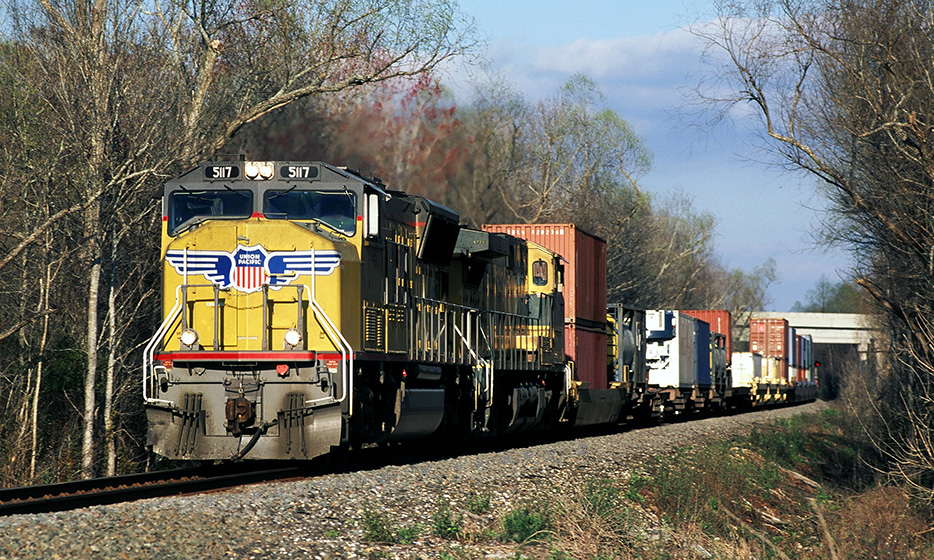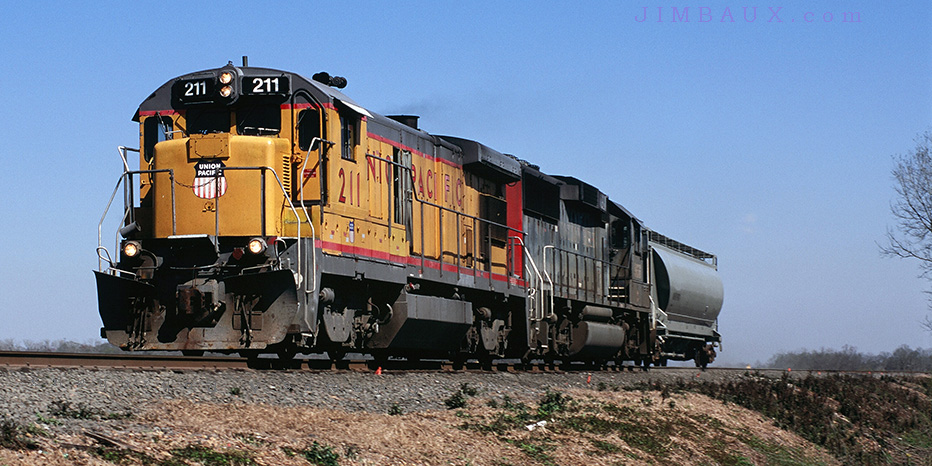This one will be brief. Presented here are three scanned slides from February of 2004, two of them of pictures taken at the same location and the other having been taken fewer than eight miles away, following up on my January 2004 pictures.
Please remember that these presentations of scanned slides are not of representative samples of my work from the time, are not inclusive of all days on which I took presentable pictures, which is why I don’t call them my “sampler” essays. At the time that I write this in early 2024, I do not own and never have owned a film scanner.
Therefore, all images presented in these slide presentations (made before I might possibly acquire a film scanner) are of slides that I paid a photo studio to have professionally scanned, and many of them came from slide-show presentations that I made and for which I never actually put the slides back into the boxes of slides of film rolls from which they came.
Close Up
I also had reason in February 2004 to not be particularly focused on, interested in, or concerned with railroad photography. I had, in the last week of January, just had a mind-stretching experience that had a profound effect on me.
I am realizing now only as a I type this (sometimes, you write so that you can even know what you think at all) on New Year’s Day of 2024 that my being autistic, which I didn’t discover for another 12 years, after this early-2004 experience probably is a large factor in how blown away I was by the experience, because the experience was of a social nature, unlike traveling to national parks or chasing and photographing trains.
I still need to ponder what this means!
Anyway, let’s get to the pictures.
Thursday, The 19th
On this afternoon, I took my first train pictures in four solid weeks (and the first in the month of February 2004), the first pictures since about three days after I photographed the Union Pacific Railroad local train with the Southern Pacific locomotive leading it on (probably) the 19th. I was able to see four westbound trains on the Lafayette Subdivision.
The first was at Chacahoula, milepost 61.4, where, at 16:31 CST, a Union Pacific Railroad intermodal train that looked like the INOLB came through, led by UP SD70M 5117.
Check out that Chicago & Northwestern locomotive behind the leader. It’s the CNW 8729. The train had 288 axles. The Mid-City Marine had reported seeing the 8729 earlier in the week in New Orleans.
I stayed put at the Louisiana Highway 309 crossing, where, 10 minutes later at 16:41, UP train LLS51, the Morgan City local train, came through.

That is UP 211, a GE B30-7A, leading, with an SSW 9???, an EMD GP60, as the second locomotive. This train had only four cars: one hopper car, two loaded pipe gondolas, and flatcar loaded with plate steel. It had arrived in Schriever ahead of the intermodal train, but it stopped to do some work, allowing the intermodal train to pass.
As I was driving back eastbound toward home, I spied yet another westbound train! This was a BNSF Railway manifest led by a clean blue-and-yellow locomotive! I must get a shot of this, I thought. I spun around and hauled tail for the Greenwood Bridge – somewhere around milepost 77 or 78 – so that I could get the overhead, head-on shot. Better still, I quickly learned that there was another westbound BNSF Railway train approaching Schriever.
Thanks to the fact that this third westbound train had to stop at Boeuf to let the LLS51 clear up, I was able to beat him and make the hike up the bridge before he came through at 17:23 as the last light of day was shining. The bridge’s own shadow made a real nuisance of itself.
Unfortunately, I don’t have this image scanned. So, you’re just going to have to image what this looked like!
It was a manifest train with the following two locomotives.
BNSF 6876 – SD40-2 – blue/yellow
BNSF 6377 – SD40-2 – Cascade Green
I don’t know what train it was.
I quickly jogged back down the bridge (easier than climbing up) in the hopes of catching the next westbound train somewhere, like the Bayou Ramos bridge. I knew that it would be close. As I passed the Ramos Bridge, I decided to nix the photo plans since the light was too subdued – and because I was lazy – as the sun was sinking into the tops of the trees.
I would have been just in time. As I continued eastward, there was the train. It was the (empty) fly ash train that The Mathews Foamer had reported seeing earlier in the day. He reported that the lead unit was the 5652, and Tom Blackwell commented that this was a GE AC4400W lost in flatland USA. However, the number I copied from repetitive radio chatter was BNSF 5256, which, of course, would make it a
regular GE Dash-9.
Saturday, The 21st
This was Fat Saturday. This was the weekend before Mardi Gras. With a break from work the following week and with me uninterested in Carnival activities, I found my way trackside.
The night before, at approximately 17:45 CST, there had been a derailment in Cade. Six cars on an eastbound BNSF Railway mixed intermodal-carload train derailed as the train entered the siding. The train was the P-LACNWO, and the cars that derailed were three insulated boxcars and three tank cars, cars 59 through 64 in the 91-car train.
By this morning, the morning of the 21st, the line had been reopened just enough so that the westbound UP train that the derailed train was to meet in the siding could crawl by. All of this information was supplied by Perry Templeton.
Anyway, there was a westbound road train that got turned loose from Avondale by midday on this day, suggesting full knowledge that the line was reopen for train movements even if they had to be at restricted speed by the derailment site.
At 12:45 CST at Thibodaux Junction, I photographed the LLS51 passing westbound with only one car, led by the UP 211.
I mentioned in the January 2004 Images essay that and why this spot is no longer publicly accessible, killing this shot opportunity. This crossing was a great place to photograph westbound trains at any time of year, because there were good views on either side of the track. Look at the lighting on the locomotive, and keep in mind that the time is 12:45 CST. A month later, I made great afternoon shots of westbound trains from the other side of the track.
Anyway, on this Saturday afternoon, I returned to the house after making that photograph, but, as busy as I may have been, I couldn’t let a gorgeous day go to waste by being inside. I returned trackside and heard of an impending meet at Schriever.
The eastbound LLS51 that I photographed earlier, returning from Boeuf, went into the siding at to await two westbound trains. I camped out again at Thibodaux Junction to get some photos of the westbound fleet, but, since they are not scanned, you won’t see them here.
At 16:07, the first train showed up, a westbound UP manifest with two locomotives.
UP 3070 – SD40-2
UP 1866 – B40-8
I sat in the truck and graded test papers for the next half-hour until the next westbound train showed up. At 16:40, BNSF intermodal train, maybe the P-NWOLAC, shows up, led by BNSF 4670 and BNSF 4104.
The LLS51 left Schriever with nine cars eastbound.
SSW 9656 – GP60
UP 211 – B30-7A
There was another BNSF train at Raceland that had apparently just been recrewed. After the LLS51 arrived at Raceland, this train proceeded westward. I was reading a magazine (had finished grading papers) when I heard the horns, as the sun was about to sink into the trees and kill all the light.
At 17:29, this train, a westbound BNSF Railway manifest train with 480 axles, shows up. Because it ran out of real estate at the west siding switch, I was able to go get the locomotive numbers.
BNSF 7165 – SD40-2 H1
BNSF 6891 – SD40-2 H1
FURX 7936 – SD40-2 H1
BNSF 4438 – C44-9W H2
It was almost like old times again.
But it’s like old times as I type this, as, the farther away that I get from this time period, the more odd, even to my railroad-enthusiast self, the practice of writing down locomotive numbers for the entire locomotive consist seems!
I included them in this post from my notes from that time in order to preserve the mood, the feel, and the approach to train-watching from that time.
That’s all.
Merci.
Jim


